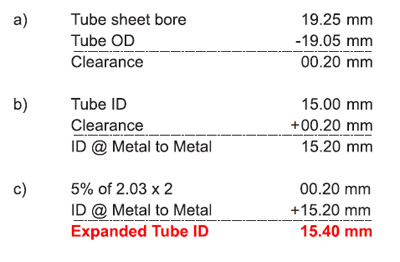Guidelines for Correct Tube Expansion
The basic purpose of tube expansion systems is to obtain a good hydraulic and mechanical joint. A secondary, but equally important, purpose is to obtain a seal that is durable, resistant to corrosion and essentially free of longitudinal stress. During tube expansion we must take care of ‘over expansion’ and we do take care of ‘under expansion’. The under expansion is detected during hydraulic test and can be corrected by re-expanding. But, over expansion cannot be detected easily and it imposes excessive stresses in the material of the tube and the tube sheet. This results in damage to the ligament and a poor joint. Subzero is leading Tube Expander Manufacturer In India.
The optimum expansion is the one that develops a leak tight joint with adequate strength and with minimum stress. The torque needed for achieving optimum tube expansion various with the tube diameter, tube thickness, tube sheet thickness, tube material and tube sheet material. Obviously, we must determine some relation between the amount of expansion and the amount of torque required to archive that. Many feel that the manufacturer should specify the torque needed for a particular combination of various conditions.
Since many preferential factors come into play like the desired amount of expansion, the lubricant used, the expansion length set on expander etc. It has to remain with the user to arrive at the torque figure. It recommended that a group of about five tubes be expanded, measuring the result after every expansion. Comparison of the measurements with the calculated figures will enable decision making on the increase or decrease of the torque to be applied.
Once the correct torque is determined the same has to be repeatedly applied for all the tubes. One of the widest methods of determining tube expansion is to determine the percentage of wall reduction of the tube being expanded. The wall reduction is due to thinning of the tube wall after the tube outer diameter comes into contact with the tube sheet bore. Tube walls of non-ferrous tubes in condensers are reduced by 3 to 4 % to get an optimum joint.
A wall reduction of 8 to 10 % in the case of ferrous tubes in heat exchanger is considered optimum, whereas non-ferrous require to be reduced by 8 to 12 % due to the pressures involved.
The calculation of figures involved in the tube expansion can be worked out as follows:
- Obtain the clearance between the tube OD and the tube sheet bore.
- Add the result to the ID of the tube.
- Add percentage figure of the tube wall thickness
This gives the final ID of the tube that is to be expanded. A typical example of the above method is given below:
Tube sheet bore 19.25mm, Tube OD 19.05mm, Tube thickness 2.03mm

Correct expansion of tubes is the forming of 100% bond between the tube and the tube sheet. Anything less or more will
result in under or over expansion. Correct tube expansion cannot be obtained by operating tube expanders by hand.
By using electronic controller, correct expansion is assured.

